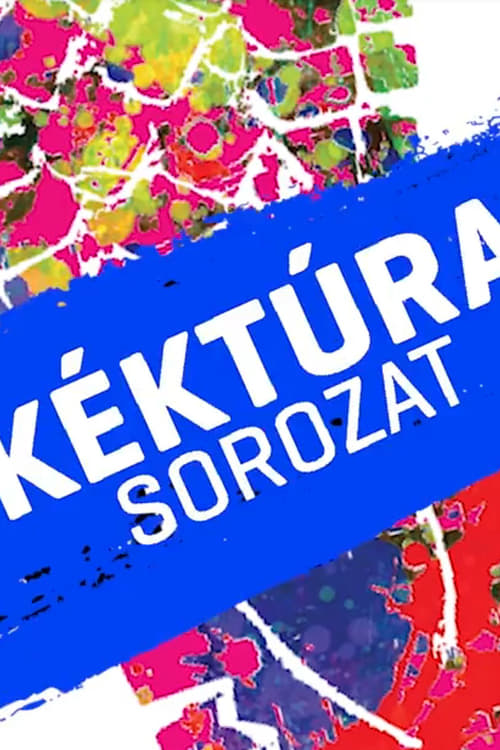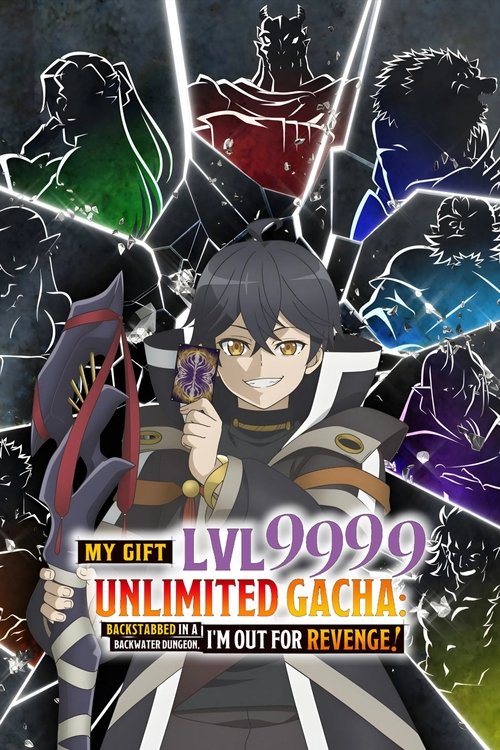
Ask Your Own Question
What is the plot?
In the opening scene of "Isten veled, Magyarország!", we are introduced to the protagonist, a young Hungarian man named András, who is struggling with his identity and the socio-political climate of Hungary. The story begins in a small village where András lives with his family. He feels a deep sense of disconnection from his surroundings and is haunted by the memories of his father, who was a political dissident. This sets the stage for his internal conflict as he grapples with his father's legacy and his own aspirations.
As the narrative unfolds, András receives an unexpected letter from a distant relative in Budapest, inviting him to visit. This letter ignites a spark of hope in him, as he sees it as an opportunity to escape his mundane life and explore the broader world. He decides to take the plunge and travel to the capital, despite his mother's apprehensions about the dangers of the city and the political unrest that has been brewing.
Upon arriving in Budapest, András is immediately struck by the vibrant yet chaotic atmosphere of the city. He meets his relative, who introduces him to a group of young activists who are passionate about social change. This group becomes a pivotal part of András's journey, as they share their dreams and frustrations about the current state of Hungary. He feels a sense of belonging for the first time, which fuels his desire to become involved in their cause.
As András becomes more entrenched in the activist community, he witnesses a protest that turns violent. The police clash with demonstrators, and András is caught in the chaos. He experiences a mix of fear and exhilaration as he realizes the stakes of the movement. This event serves as a turning point for him, solidifying his commitment to the cause and pushing him to take a more active role in organizing future protests.
In the following weeks, András faces increasing pressure from both the authorities and his family. His mother, worried for his safety, pleads with him to return home, while the government intensifies its crackdown on dissent. András struggles with his loyalty to his family and his newfound purpose. He begins to question whether he can truly make a difference in the face of such overwhelming opposition.
As tensions rise, András and his friends plan a major demonstration to demand political reform. The night before the event, they gather in a small apartment, discussing strategies and potential outcomes. András feels a mix of excitement and dread, knowing that this could be a defining moment for their movement. The group shares personal stories, deepening their bonds and reinforcing their resolve.
On the day of the protest, the atmosphere is electric. Thousands of people gather in the square, chanting slogans and waving banners. András stands at the forefront, feeling a surge of adrenaline as he addresses the crowd. However, the situation quickly escalates when the police arrive in full force, leading to a brutal confrontation. András witnesses friends being arrested and injured, and he is faced with a choice: to flee or to stand his ground.
In a moment of clarity, András decides to stay and help those who are being targeted by the police. He uses his knowledge of the city to guide people to safety, but in the process, he is captured. The scene is tense as he is taken away, and he feels a mix of fear and determination, knowing that he has chosen to fight for what he believes in.
While in detention, András reflects on his journey and the sacrifices he has made. He meets other political prisoners who share their stories, further fueling his resolve. The conditions are harsh, and he faces psychological pressure from the authorities, who attempt to break his spirit. However, he remains steadfast, drawing strength from the memories of his father and the hope of a better future for Hungary.
Eventually, András is released due to public outcry and international attention on the protests. He returns to his family, who are relieved but also conflicted about his choices. András realizes that he cannot go back to his old life; he must continue to fight for change. The season ends with him standing on a rooftop overlooking Budapest, contemplating the road ahead and the challenges that lie in wait, symbolizing his commitment to the cause and the ongoing struggle for freedom in Hungary.
Related Titles
Browse All Titles →
What is the ending?
In the ending of "Isten veled, Magyarország!", the main characters face the culmination of their personal journeys and the conflicts that have defined their experiences throughout the season. The story concludes with a sense of resolution for some, while others are left grappling with the consequences of their choices.
As the final scenes unfold, we see the characters confronting their pasts and the relationships that have shaped them. The emotional weight of their decisions comes to a head, leading to moments of reconciliation, heartbreak, and new beginnings. The fate of each character is revealed, showcasing their growth and the impact of their experiences.
The final episode begins with a somber atmosphere, as the characters gather in a familiar location that has been significant throughout the season. The air is thick with tension, and the weight of unspoken words hangs heavily. The camera pans across the faces of the main characters, capturing their expressions of anxiety and anticipation.
Scene 1: The Gathering The scene opens with the main characters arriving one by one. Each character's entrance is marked by a brief flashback that highlights their journey, revealing the struggles they have faced. As they come together, the audience can sense the unresolved issues that linger between them. The protagonist, who has been on a quest for identity and belonging, stands at the center, visibly torn between hope and despair.
Scene 2: Confrontation As the group settles, a confrontation erupts. Old grievances are aired, and the characters express their frustrations and fears. The dialogue is charged with emotion, and the camera captures close-ups of their faces, emphasizing the intensity of the moment. The protagonist, feeling the weight of their expectations, struggles to articulate their feelings, leading to a moment of vulnerability that resonates with the others.
Scene 3: Reflection Following the confrontation, the characters take a moment to reflect on their past decisions. Flashbacks intersperse the present, showing pivotal moments that have led them to this point. The protagonist recalls their journey of self-discovery, while others reflect on their relationships and the choices that have brought them pain and joy. This scene is marked by a poignant score that underscores the emotional gravity of their realizations.
Scene 4: Resolution As the tension begins to dissipate, the characters start to find common ground. They share stories of their struggles and triumphs, fostering a sense of understanding and empathy. The protagonist takes a deep breath and finally expresses their desire for connection and acceptance. This moment of honesty opens the door for reconciliation, and the group begins to embrace one another, symbolizing their growth and the healing of old wounds.
Scene 5: New Beginnings The final moments of the episode shift to a more hopeful tone. The characters make plans for the future, each expressing their commitment to support one another. The protagonist, now more confident in their identity, takes the lead in organizing a community event that reflects their shared values and aspirations. The camera captures their smiles and laughter, a stark contrast to the earlier tension.
Scene 6: Farewell As the episode draws to a close, the characters share a heartfelt farewell, acknowledging the journey they have taken together. Each character's fate is revealed: some choose to pursue new opportunities, while others decide to stay and nurture their relationships. The protagonist stands at the edge of the gathering, looking out at the horizon, symbolizing the endless possibilities that lie ahead.
The screen fades to black, leaving the audience with a sense of closure and the understanding that while challenges remain, the bonds formed through their experiences will guide them forward. The final shot lingers on the protagonist's hopeful expression, encapsulating the essence of their journey and the promise of a brighter future.
Is there a post-credit scene?
In "Isten veled, Magyarország!" Season 1, there is no post-credit scene. The episodes conclude without any additional scenes or teasers after the credits roll. The focus remains on the narrative and character development throughout the episodes, wrapping up the storylines without extending into a post-credit moment. Each episode is designed to provide a complete experience, leaving viewers with a sense of closure as they move from one episode to the next.
What are the main character's motivations throughout Season 1?
In Season 1 of 'Isten veled, Magyarország!', the main character, a young Hungarian woman named Anna, is driven by her desire to reconnect with her roots and understand her family's history. As she navigates her life in a rapidly changing Hungary, her motivations are deeply tied to her emotional struggles with identity and belonging. Anna's journey is marked by her interactions with various characters who represent different facets of Hungarian culture and history, each influencing her quest for self-discovery.
How does Anna's relationship with her family evolve in Season 1?
Throughout Season 1, Anna's relationship with her family is complex and evolves significantly. Initially, she feels a sense of alienation from her parents, who are more traditional and resistant to change. As the season progresses, Anna confronts her family's past, leading to emotional revelations that bring her closer to her parents. Key scenes include heartfelt conversations where they share their experiences during Hungary's political upheaval, allowing Anna to understand their sacrifices and ultimately fostering a deeper bond.
What role does the setting of Hungary play in the character development?
The setting of Hungary in Season 1 is integral to character development, as it reflects the socio-political landscape that shapes the characters' lives. The vibrant streets of Budapest serve as a backdrop for Anna's exploration of her identity, while historical landmarks evoke memories of the past. The contrast between urban and rural settings highlights the generational divide within Anna's family, influencing her relationships and decisions. The rich cultural tapestry of Hungary, depicted through festivals and local traditions, also plays a crucial role in Anna's journey of self-discovery.
What challenges does Anna face in her personal life during Season 1?
In Season 1, Anna faces numerous challenges in her personal life, including navigating her career aspirations while dealing with societal expectations. She struggles with the pressure to conform to traditional roles, which conflicts with her desire for independence. Additionally, her romantic relationships are fraught with tension, as she grapples with trust issues stemming from her family's past. These challenges are depicted through emotionally charged scenes where Anna must make difficult choices that test her resilience and commitment to her own identity.
How do secondary characters influence Anna's journey in Season 1?
Secondary characters in Season 1 play pivotal roles in influencing Anna's journey. Her best friend, László, serves as a confidant and a source of encouragement, pushing her to embrace her ambitions. Meanwhile, her grandmother, who embodies the traditional values of Hungarian culture, challenges Anna's modern views, creating a generational conflict that forces Anna to reconcile her past with her present. Each character's unique perspective adds depth to Anna's understanding of her heritage, ultimately shaping her decisions and growth throughout the season.
Is this family friendly?
"Isten veled, Magyarország!" is a drama that explores themes of family, identity, and the complexities of life in Hungary. While the show is rich in cultural context and emotional depth, it does contain some elements that may be considered objectionable or upsetting for children or sensitive viewers.
-
Emotional Turmoil: Characters often experience intense emotional struggles, including grief, loss, and conflict, which may be distressing for younger audiences.
-
Family Conflict: There are scenes depicting familial disputes and tensions that can be uncomfortable, showcasing the challenges of relationships.
-
Societal Issues: The show addresses various societal issues, including economic hardship and social injustice, which may be heavy themes for children.
-
Mature Themes: Some storylines may touch on themes of betrayal, infidelity, and moral dilemmas that could be inappropriate for younger viewers.
-
Violence and Threats: There are moments of implied violence or threats that could be unsettling, even if not graphically depicted.
-
Cultural References: Certain cultural references and historical contexts may be difficult for younger viewers to fully understand, potentially leading to confusion or misinterpretation.
Overall, while the show offers valuable insights into Hungarian culture and human experiences, it may not be suitable for all children or sensitive viewers due to its emotional weight and mature themes.


















